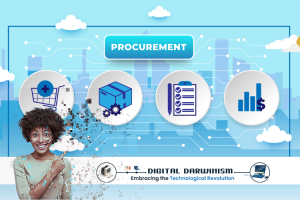By Heta Pirttijärvi, Business Development Manager, Sievo
In this article, we will look at some of the effects that COVID-19 has had on business spend based on anonymised enterprise data.
2020. We all know that it was an eventful year, disrupting many things as we know it. There have been enough Internet posts about how 2020 disrupted digitisation, how working from home affected individuals and how procurement needed to adapt. But how is 2020 presented in companies’ spend? Have companies spent more on consulting projects for help through the crisis? How much has travelling spend actually decreased by? How about fruit around the office? Have companies had the money to do market research? Let us find out…
Sievo is in a fortunate situation to understand company spend, owing to us having access to over 800 billion dollars of spend from many different companies around the world who have given us access to it through our spend analytics software. As a disclaimer at this stage, we want to emphasise that we are only using data from clients who have given their specific consent to derive any anonymous summaries (like this article).
Perhaps one of the most obvious changes in spend compared to 2019 is regarding travel. In 2020 conferences were virtual and sales meetings were held from the comfort of our own homes. Therefore, in 2020, global travel spend decreased by as much as 75% and airline spend decreased by 87% compared to 2019.
This is something that we may have guessed, but the spend data also shows exactly when the pandemic started and when it started to affect travelling spend. After a few already lower months, one can see a clear drop from March 2020 onward as the pandemic hit most of the world. To this day, global travelling spend has yet to show marked recovery to previous stages. It is also possible to analyse travel spend by country (not presented in the graph), which gives us hints that, as the pandemic situation started to recover in Asia, the region also showed slight recovery in terms of travel spend. At least the environment will thank us for not flying and rather learning to communicate with everyone on the other side of the world through our computers!
So, in addition to business trips being cancelled from March 2020 onward, what else has changed since then? Apparently a lot of things. As we know, March 2020 was a strange month. While consumers were panicking by hogging toilet paper, businesses were also making large changes and trying to figure out what is happening. Business consulting spend peaked, as businesses asked for help from consultancies to get through the crisis. As a result, global business consulting increased by 22% year-on-year.
Around the same time, companies were in need of legal services, making this spend group rise by 25% from 2019. Also spend on donations and gifts increased – hopefully not to bribe any legal entities! All kidding aside, the spend data from 2020 showed us that, in times of difficulty, external services were considered helpful when trying to figure out what is possible, what should be done and how to move forward.
Another spend group that increased was advertising. For businesses to remain competitive, several companies held on to their advertising budgets, or even increased them, resulting in advertising having increased in double digits compared to 2019. If you felt like you saw several advertisements about relaxed home-wear, for example, your hunch may have been right. In fact, consumer goods companies actually spent a lot more on marketing compared to manufacturing companies in 2019.
With this being said, 2020 was a difficult year for many companies and, therefore, the total marketing spend decreased along with, for example, advertising production spend. Reports such as the one from IAB (COVID Effect on Advertising, 09/2020) confirm this, as it states how total advertising has, in many places, decreased while specifically digital advertising spend has increased quite a bit.
In addition to doubling down on digital, companies have pursued to remain competitive by understanding the market and the vast changes through market research. “What are consumers buying now?” “Will my clients go bankrupt?” “What is trending in the USA?” This has resulted in market research spend increasing by 12% compared to 2019.
In addition to trying to survive 2020, by taking advantage of external services, advertisements and market research, companies naturally attempted to decrease costs. Training was down by 33%, software by 12%, furniture by 48% and utilities by 23% compared to 2019. All spend deemed unnecessary seemed to have decreased, including office snacks. As employees are working from home, no more fresh bananas and apples are needed in coffee rooms, possibly being one factor in making spend on fruit and vegetables decrease by 30% compared to 2019.
We know that the aspects that we can see from company spend are interesting and they do surely give us insight into what happened in 2020, but it must be remembered that they do not give us the full story. No-one can deny that travel spend did, indeed, drop drastically, but what spend data cannot show us is how the lack of travelling affected sales teams’ meetings, for example. We can see that advertising spend increased but we cannot see the long hours that marketing teams pushed to get amazing content out. With this being said, spend data does show us the large trends that happened in 2020 in companies around the world.
All in all, what spend data showed us is that 2020 was, indeed, quite eventful. The pandemic hit most of the world in March 2020 and businesses did not know what to expect. The stock market fluctuated, stores ran out of products and employees started to work from home. Spend data showed that, to get through this, businesses started to drastically cut costs from various areas. They also started to rely on the help of external services, such as consultancies and legal services. To understand what is happening in the market, many also increased their market research spend. These measures, ultimately, resulted in clear savings. Who knew that spend data could be so insightful?
Although it would be very useful to be able to see straight into the future, part of procurement’s fun is the freedom to decide. Maybe in 2021 businesses will all be spending on airlines, who knows. What we can say is that 2021 spend cannot be as eventful as 2020, right?


























